08 September 2018
Milan. Haegue Yang.
Triennale di Milano 7 September - 4 November 2018
Haegue Yang (b. 1971 in Seoul, South Korea; based in Berlin and Seoul) is one of the most renowned artists of her generation. After studying in her native Korea (Seoul National University, 1994), Yang moved to Germany and received her Meisterschüler from the Städelschule in Frankfurt (1999), where she now teaches, while actively exhibiting around the world.
The Triennale di Milano and Fondazione Furla present Haegue Yang: Tightrope Walking and Its Wordless Shadow, an exhibition curated by Bruna Roccasalva and organized by Fondazione Furla and La Triennale di Milano.
Tightrope Walking and Its Wordless Shadow, which marks Yang’s first institutional solo show in Italy, will explore the vast array of media employed by the artist, ranging from paper collage, video essays, and performative sculptures to large-scale installations. Yang’s spectrum of allusions and visions walks a thin line between social inquiry and history, personal life and collective memory, yielding imagery and experiences of enormous evocative power, in which objects, figures, and places are inextricably linked.
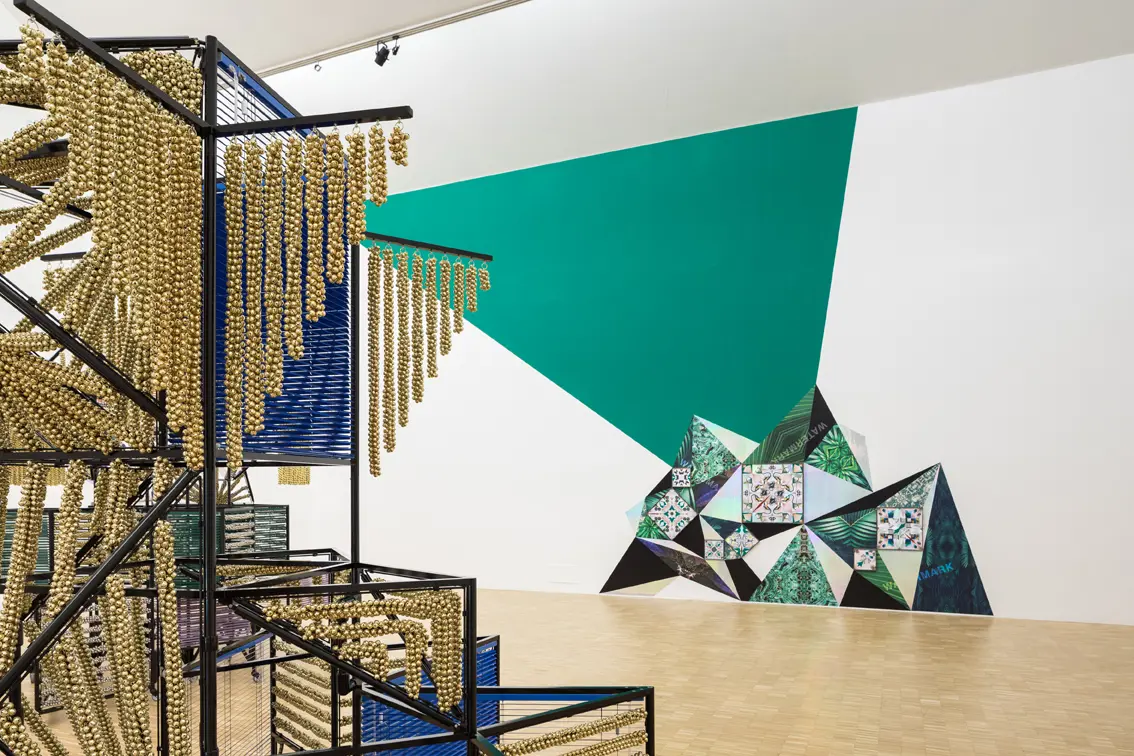
HAEGUE YANG, © photo Gianluca Di Ioia
Tightrope Walking and Its Wordless Shadow unfolds through three rooms where landmark works are combined with ambitious new commissions to highlight recurring themes in the artist’s career: abstraction and geometry, movement and performativity, and the interlocked dynamics of folding and unfolding. Yang explores all of these as interwoven entities in a selection of pieces that represent key stages in her oeuvre, from 2000 up to her most recent works. It also points to her deep engagement with the unspoken: the urge to create a language whose potentiality is like a tightrope walk, where each move is powerfully dynamic and charged with both emotional and perceptual tension.
From the minimalist approach of the first room to the lush exuberance of the last, the exhibition reflects the different extremes that are touched by Yang’s ongoing process of experimentation, where chance encounters with an object or material are prone to generate unexpected forms, emotions, and narratives, and where the rejection of entrenched ideas always opens up new perspectives.
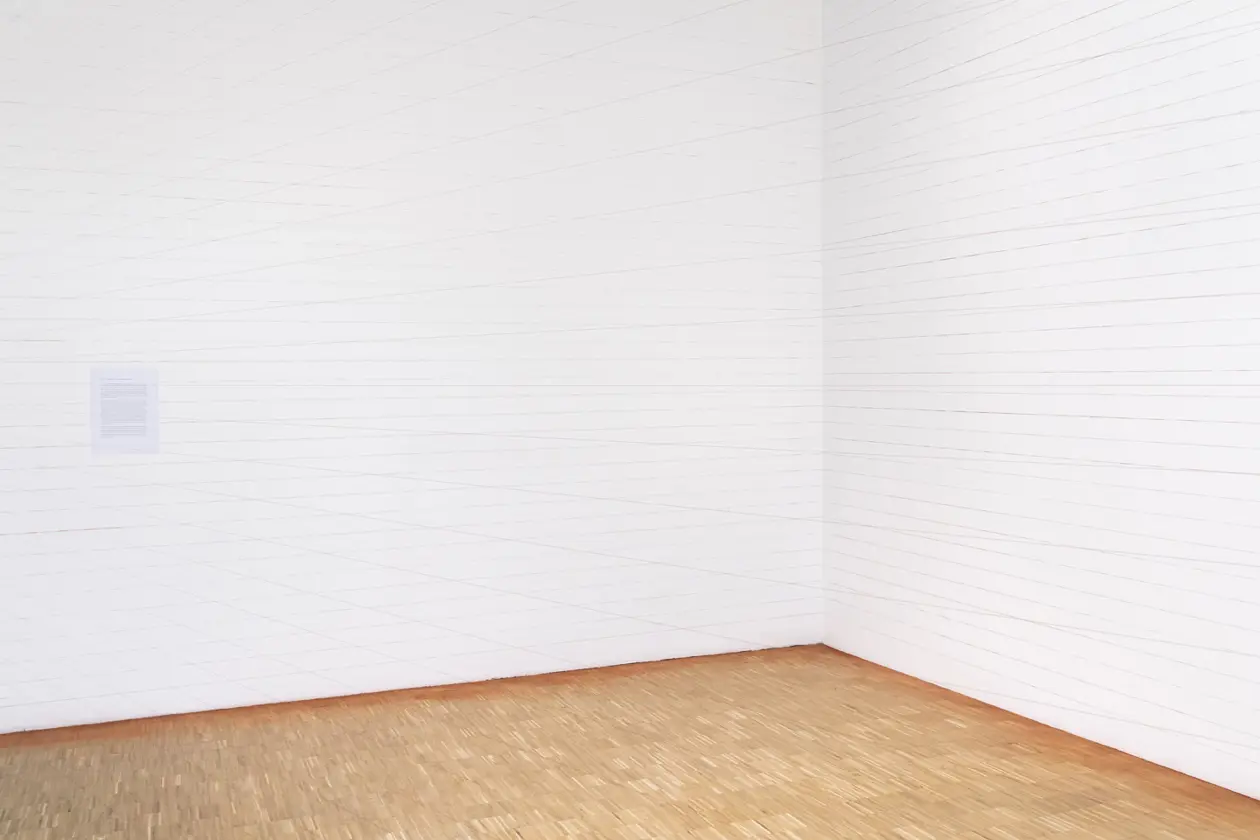
HAEGUE YANG, © photo Masiar Pasquali
Ushering us into the show, the first room introduces two subtle and sensitive installations: Thread Installation, 134.9 m³ (2000/2018) and Chalk Line Drawing, 81 m² (2002/2018). Though rarely shown, these series are regarded as seminal.
134.9 m³ is an almost invisible barrier of red cotton thread -stretched between two walls at ten-centimeter intervals and imperceptibly slanted at an angle of exactly one degree - which isolate and block off one corner of the room. Their pattern seems to continue on the walls behind them in 81 m²: a sequence of straight lines drawn in red chalk, which visually merge with the threads, creating an optical effect of subtle movement.
The series Thread Installations and Chalk Line Drawings are always titled with the surface area or volume of space that they occupy in a given presentation. They are considered to contain the seed of aspects central to her later work: from her interest in geometry and her use of everyday materials, to her penchant for creating an ambivalent space between the conceptual and the perceptual, while simultaneously oscillating between the accessible and inaccessible.
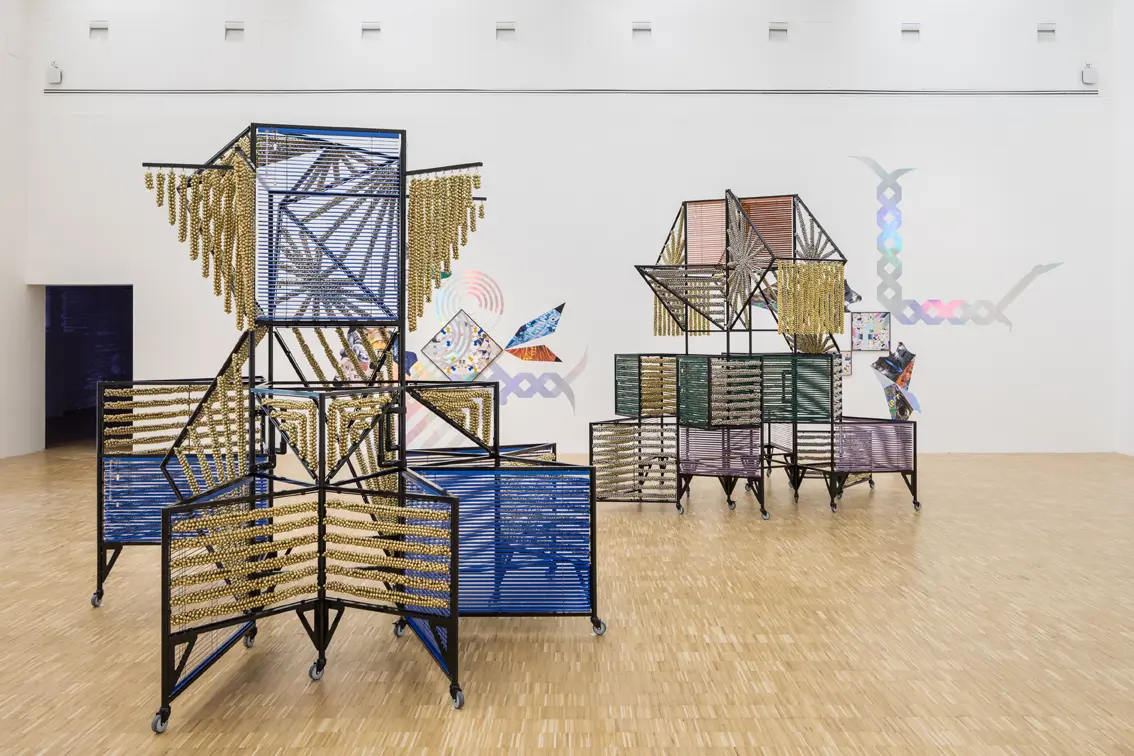
HAEGUE YANG, © photo Gianluca Di Ioia
Locked within the space marked off by these two installations is another of the artist’s early works, Science of Communication #1 - A Study on How to Make Myself Understood (2000), on a single sheet of A3 paper, which addresses the artist’s lasting concerns and struggle with language in the sphere of cultural and social integration. Her incomprehensible notes, in a mixture of various languages, were subsequently edited and translated into English by a professional translator. The original version, which was born as a string of unintelligible personal thoughts, unfit to be shared, was eventually put into fathomable form. Here, the artist’s biography plays a role - in 1994 she moved to Germany from her native Korea to study in Frankfurt, and the impediments faced in expressing her mind or thoughts in a foreign language became a severe struggle on a daily basis.
The processes involved in Science of Communication #1 – A Study on How to Make Myself Understood, with their mediation of the other, express the artist’s inability, dependency, and vulnerability. The piece extends this reflection to include the greater difficulty, or even impossibility, of conveying one’s inner life through language.
This sense of incommunicability also echoes through Mirror Series – Back (2006), an oval mirror hung with its reflective side to the wall, as if turning its back on the viewer and removing itself from the world. It hints at the conscious negation of a given role, and an active refusal of conventional modes of behavior. Mirror Series – Back belongs to a group of six works (Mirror Series, 2006/2007). Each of them explores a polite rejection of the expected function of reflecting what is in front of it. Mirror Series exemplifies Yang’s evident approach to figuration: her works allude to the human figure without ever directly portraying it -sometimes, as in this case, by pointing to its absence.
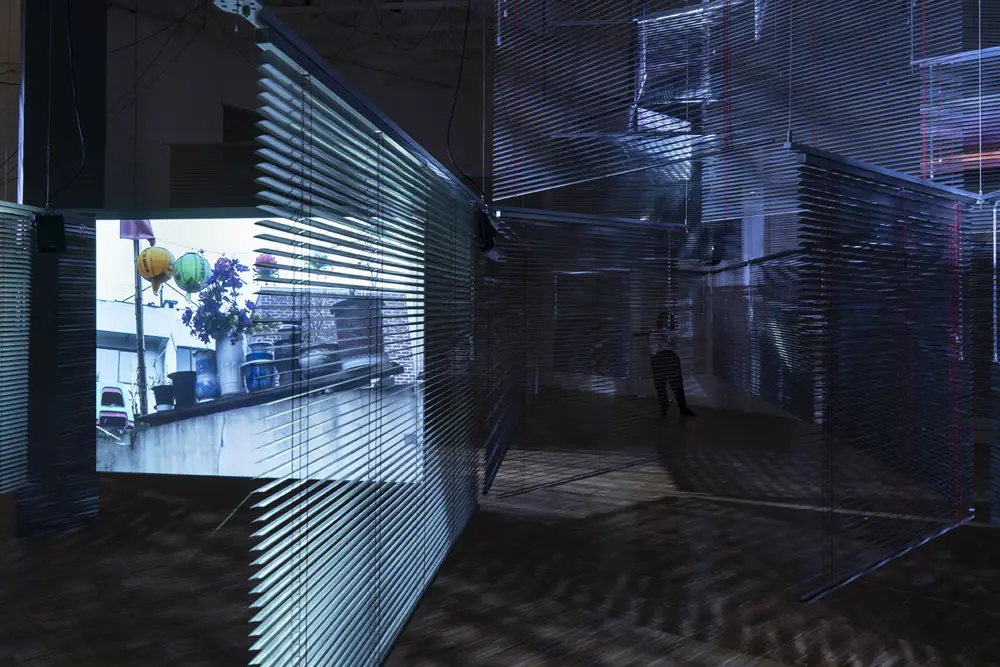
HAEGUE YANG, © photo Masiar Pasquali
From the “permeable and transparent barrier” of 134.9 m³, we move on to Cittadella (2011), the monumental installation of 176 venetian blinds that constitutes the deep yet penetrable center of the exhibition. Visitors move through this multisensory environment of intricate modular structures accompanied by a hypnotizing choreography of light, while various scents that allude to an “elsewhere” drift through the space. The title (“Citadel”) evokes an impenetrable fortress, but the inviolable nature of this structure is in fact a partial illusion. Its walls, made of slats with rays of light seeping through them, are permeable to the gaze, and the openings in the geometrical outline of the structure invite viewers to walk into and through it.
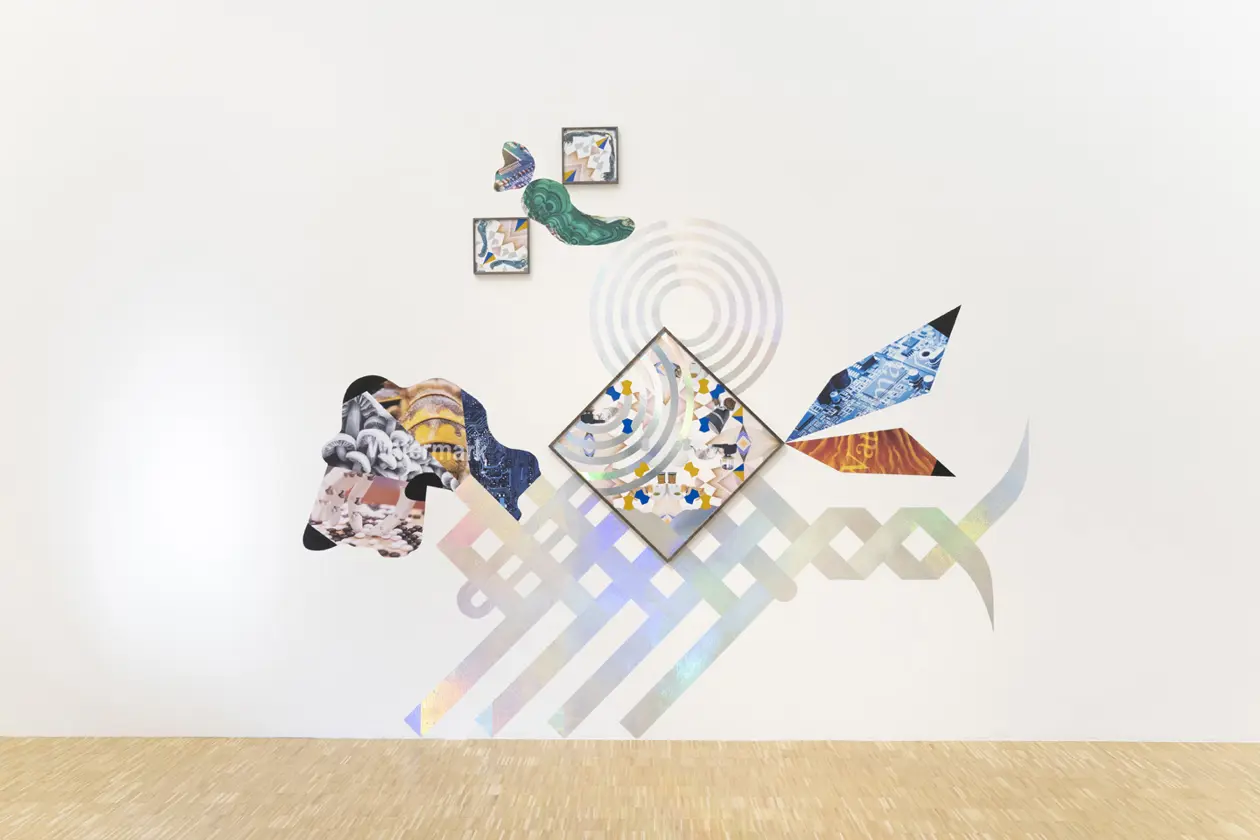
HAEGUE YANG, © photo Masiar Pasquali
After this evocative, immersive, dim environment comes a large, bright, open space that feels like a ballroom, its walls ornamented by a mural-like piece from the ever-evolving graphic series Trustworthies (ongoing since 2010). In the artist’s major work cycle, Yang combines different graphic materials, such as patterned envelopes, her own custom-printed graph paper (Grid Blocs, ongoing since 2000), motifs of technical devices and natural imagery, as well as reflective vinyl film. The series originated with the artist’s chance discovery of the amazing variety of the security patterns printed inside envelopes to keep their contents confidential. Focusing on the aesthetic potential of these patterns, Yang began collaging them into geometric compositions: abstract landscapes of simple horizontal lines, at first, which over time have grown into increasingly complex compositions - waves, refractions, windmills, x-shaped or interwoven forms, and kaleidoscopes - incorporating a wide range of materials, like origami paper, sandpaper, holographic paper, and graph paper, even emerging from their frames to cover the entire wall, as in the piece on view. Today, Trustworthies has become a tool for Yang to create a complex environment for sculptural works. Similar to her collaborative wallpaper series, Trustworthies modifies the surrounding walls to transform a space into a place in which the full habitus of things can unfold.
The fanciful figures and narratives that unfold across the walls of the room serve as a backdrop for the “dance” of two newly conceived performative sculptures from the Dress Vehicles series (ongoing since 2011). Inspired by various forms and notions of dance, such as the “Sacred Dances” of the Russian spiritualist G. I. Gurdjieff, and the geometric costumes of Oskar Schlemmer’s “Triadic Ballet”(1922), these Sonic Dress Vehicles are meant to “dress” performers like “masks”, granting or obscuring an identity, as Yang also often references drag queens, various traditional mask dances, and puppet theater.
Meanwhile, dance seems like more than a genre to Yang. It is a complex form of expression, in which physical, spiritual/ritualistic, and socio-political impulses become synchronized, even though Dress Vehicle doesn’t allow any spectacular freedom of movement. In fact, Yang believes that in the very simple exercise of pushing this gigantic structure around, one may feel the very “weight” of dance: in other words, be “burdened” by this splendid costume yet eventually also feel empowered by carrying it around. As hybrids that blend architecture, sculpture, and performance, Sonic Dress Vehicles seem to sum up the multifaceted nature of Yang’s oeuvre that is so evident in this exhibition.
Info: Triennale di Milano, Viale Alemagna 6. www.triennale.org. Tuesday - Sunday 10.30 am - 8.30 pm (admission closes 7.30 pm).
Edited by Nicolò Villa
Copyright © Sisterscom.com
Source, Photos: Fondazione Furla - Press office; Masiar Pasquali; Gianluca Di Ioia.
All rights reserved.
You might be interested in
Destinations

Events
Italian cuisine is an Intangible Heritage of Humanity
UNESCO recognizes Italian culinary excellence worldwide, strengthening the Italian cultural identity and increasing the tourist attractiveness of the country for those who travel to discover authentic flavors
Destinations
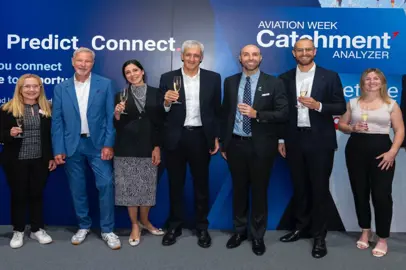
Events
Milan will host the CAPA World Aviation Summit 2026
Top managers and international aviation players will meet in the Lombard capital to discuss sustainability, innovation and future strategies of the sector
Destinations
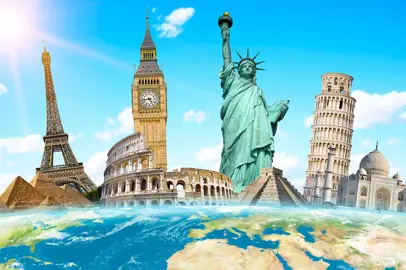
Events
World Tourism Day
It is celebrated on September 27 in Melaka (Malaysia) and this year's theme is "Tourism and Sustainable Transformation". It will be followed by the WTTC Global Summit in Rome from 28 to 30 September 2025

